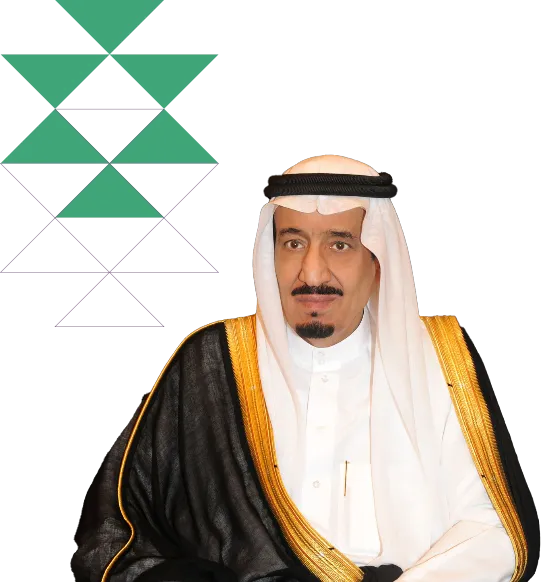“
My primary goal is to be an exemplary and leading nation in all aspects, and I will work with you in achieving this endeavour.
”
Custodian of the Two Holy Mosques King Salman Bin Abdulaziz Al-Saud
“
Our goal is to position Riyadh among the world’s most distinctive cities in quality of life, tourism, and services.
”
His Royal Highness Prince Mohammed Bin Salman Bin Abdulaziz
Crown Prince, Prime Minister, and Chairman of the Board of Directors of the Royal Commission for Riyadh City
OUR
MANDATE & DUTIES
We realize the will of the Custodian of the Two Holy Mosques to establish a joint authority that leads, supervises, and orchestrates the comprehensive development of the city of Riyadh.
LEARN MOREOUR
PROGRAMS & PROJECTS

Main & Ring Road Axes Development Program
Towards a More Efficient and Sustainable Road Network… As part of enhancing the transportation system in Riyadh and preparing it to become a leading hub for sustainable mobility and logistics services in the Middle East, His Royal Highness Prince Mohammed bin Salman bin Abdulaziz, the Crown Prince, Prime Minister, and Chairman of the Board of […]

King Abdulaziz Project for Riyadh Public Transport
The King Abdulaziz Project for Riyadh Public Transport is part of the Royal Commission for Riyadh City’s ambitious city plan to equip Riyadh with public transport that provides all population groups with suitable public transport services, accommodating existing and future mobility needs in Riyadh. The project is dedicated to building, operating, and developing a world-class […]

Green Riyadh Program
The “Green Riyadh” program is one of the largest ambitious urban afforestation projects in the world and one of the four major Riyadh projects launched by the Custodian of the Two Holy Mosques King Salman Bin Abdulaziz, on Tuesday, Rajab 12, 1440 AH (March 19, 2019 AD) at the initiative of His Royal Highness Prince […]

Riyadh Art Program
Riyadh Art is one of Riyadh’s Four Mega Projects launched by the Custodian of the Two Holy Mosques, King Salman Bin Abdulaziz Al Saud, on Tuesday, 19 March 2019 (12 Rajab 1440H), as an initiative by His Royal Highness Prince Mohammed bin Salman bin Abdulaziz Al Saud, Crown Prince and Prime Minister. It is a […]

King Salman Park
King Salman Park is one of Riyadh’s Four Megaprojects launched by the Custodian of the Two Holy Mosques, King Salman Bin Abdulaziz, on 19 March 2019. The Park aims at providing a variety of sports, cultural, artistic, and recreational options to the residents and visitors of Riyadh, therefore, improving the quality of life in the city in line with Saudi Vision 2030’s goals of a vibrant and healthy society, and raising Riyadh’s global ranking.
OUR
LATEST NEWS
Sultan Bin Abdulaziz Humanitarian City Children’s Drawings Light Up “Noor Riyadh”
From children’s imagination and the warmth of light, “The Light to Home” (2025) unites art and hope. Drawings by young patients from Sultan Bin Abdulaziz Humanitarian City and China were transformed at King Abdulaziz Historical Center into suspended light formations for Noor Riyadh, celebrating childhood creativity and pure imagination. This piece marks a significant […]
READ MORE‘Noor Riyadh’ Festival: Five Years of Creativity and Global Artistic Transformation
In a city whose features are changing in the blink of an eye, and which continues to script new chapters of its ambitious transformation under Saudi Vision 2030, the “Noor Riyadh” festival stands out as one of the creative landmarks that helped reshape Riyadh’s presence on the global arts map. The festival has become […]
READ MORERCRC CEO Visits “Noor Riyadh” Festival
His Excellency Engineer Ibrahim bin Mohammed Al-Sultan, CEO of the Royal Commission for Riyadh City (RCRC), visited the Noor Riyadh Festival, a key initiative organized by RCRC as part of the Riyadh Art program. During the visit, he toured the participating artworks and experiences, which significantly enrich Riyadh’s creative landscape. Since its launch in […]
READ MORERiyadh Metro Earns Guinness World Record for the Longest Driverless Train Network
The Riyadh Metro has secured a prominent global recognition, entering the Guinness World Records as the world’s longest fully automated, driverless metro network, spanning 176 kilometers. This accomplishment highlights the Kingdom’s accelerating progress in building modern and sustainable mobility systems. As a core component of the Saudi capital’s public transport project, the Riyadh Metro […]
READ MORERCRC Showcased Riyadh Expo 2030 and World Cup 2034 Projects at the Saudi-French Business Forum
The Royal Commission for Riyadh City (RCRC) participated in the Saudi-French Business Forum, held in Riyadh from November 23–25, 2025, under the theme “From Expo 2030 to World Cup 2034.” The event was attended by H.E. Dr. Majid bin Abdullah Al-Qasabi, Minister of Commerce, and H.E. Nicolas Forissier, France’s Minister Delegate for Foreign Trade […]
READ MORE
